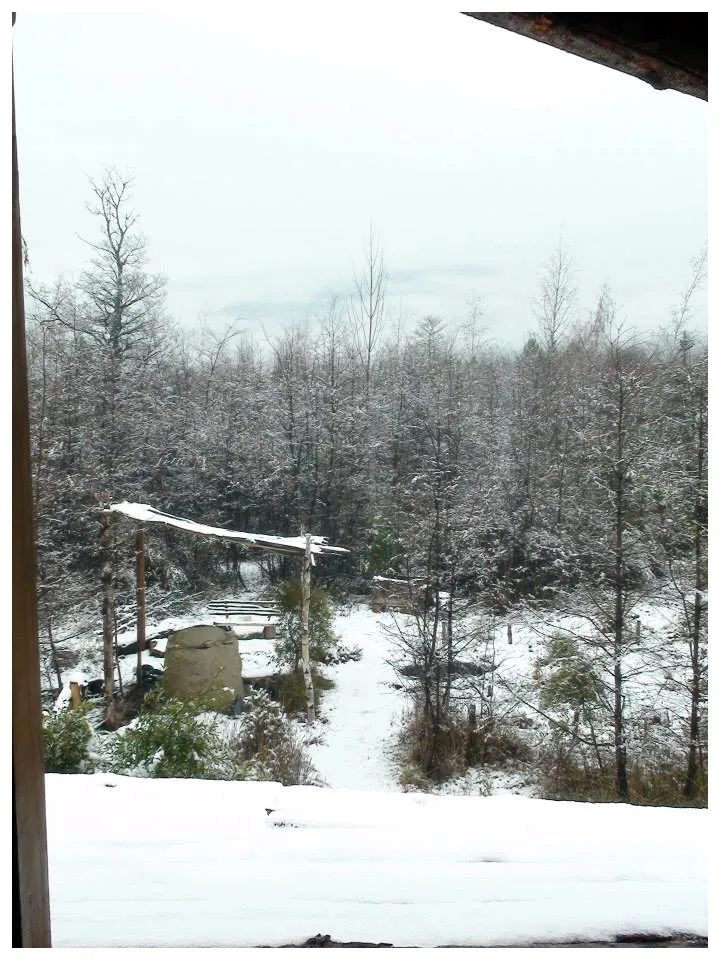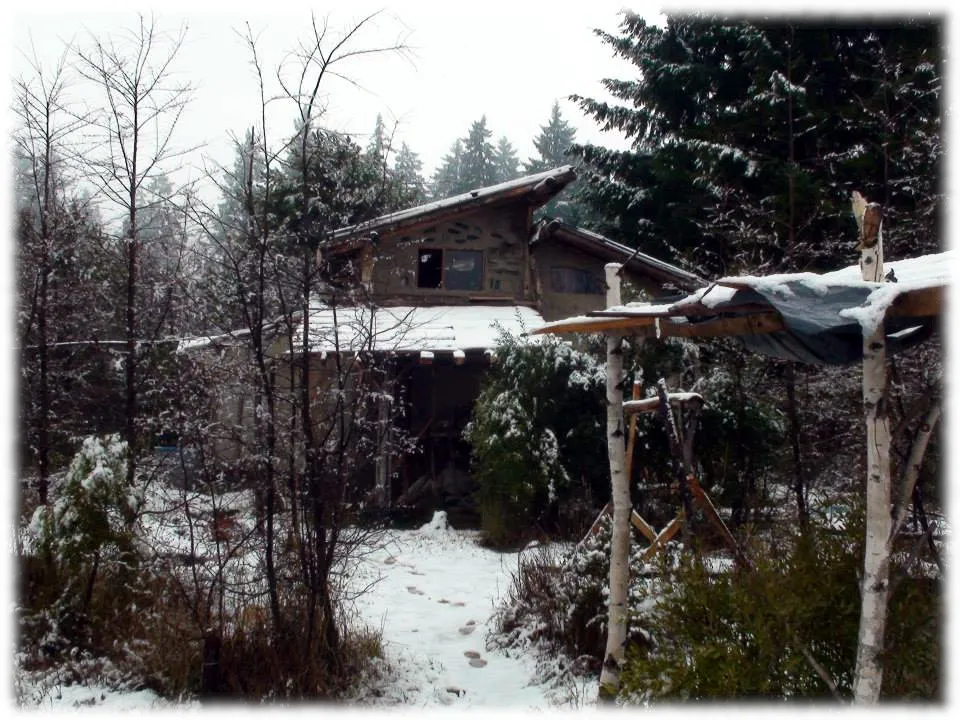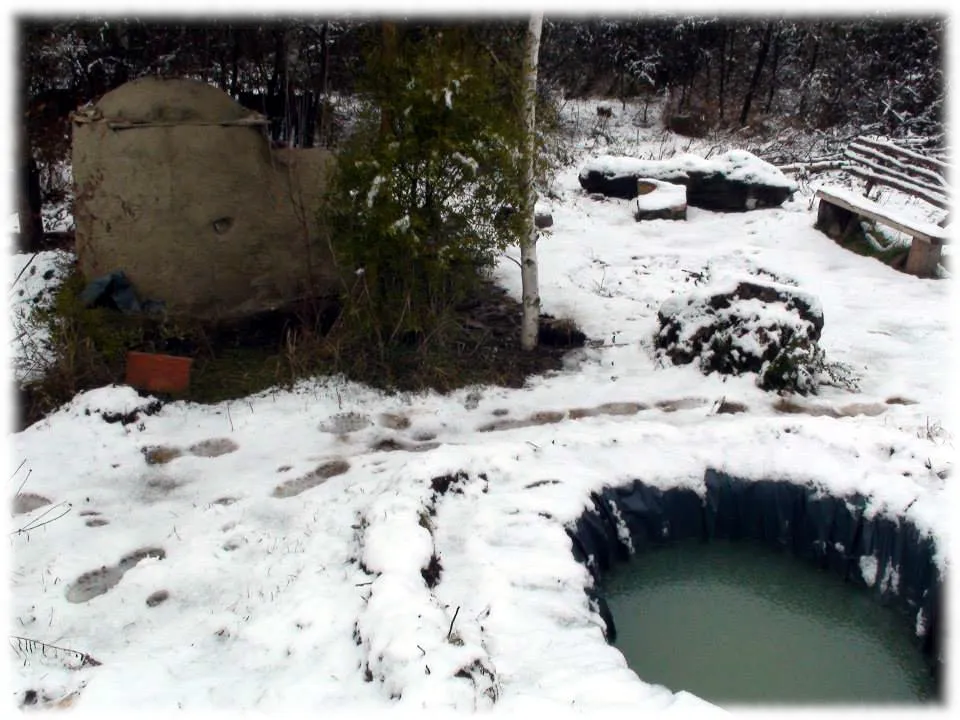Tierra cruda y tierra cocida
¿Como llegamos a esto...
Raw earth and cooked earth
How did we get to this...
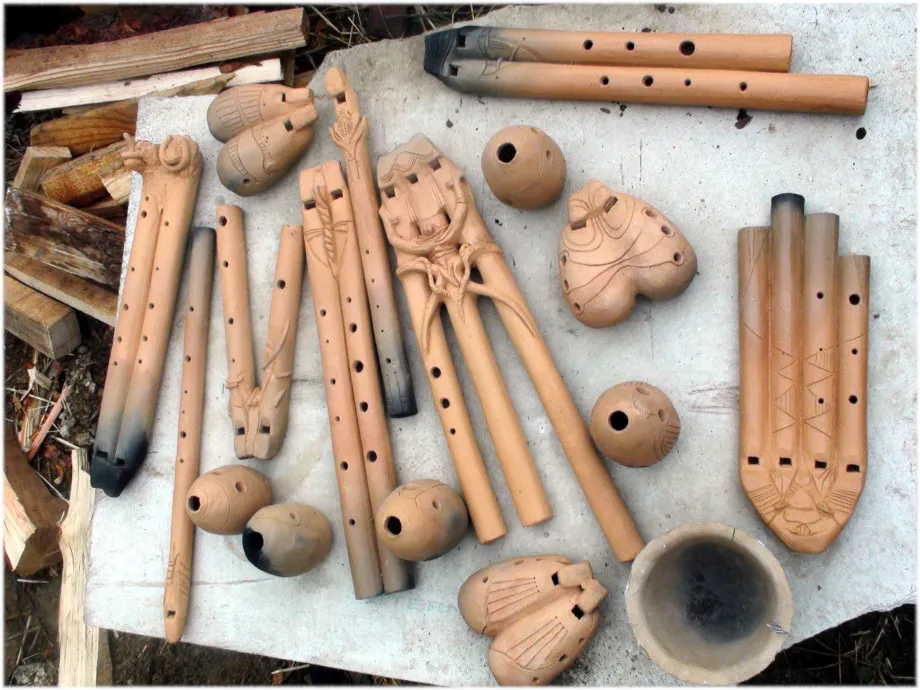
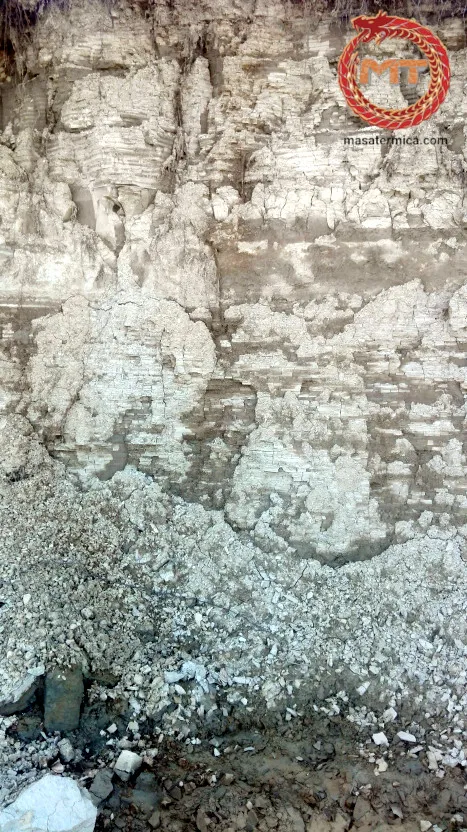
barro puede convertirse en un instrumento musical.

Los ceramistas
El protagonista de esta historia es Niclas Kovolf, que en aquella época estaba comenzando a aprender a trabajar la cerámica. Un día llegó a mi casa con un plano dibujado a mano. Era un horno de cerámica, y lo había dibujado un maestro ceramista de origen japonés.
mud can be turned into a musical instrument.

The potters
The protagonist of this story is Niclas Kovolf, who at that time was beginning to learn to work with ceramics. One day he came to my house with a hand-drawn plan. It was a ceramic kiln, and had been drawn by a master potter of Japanese origin.
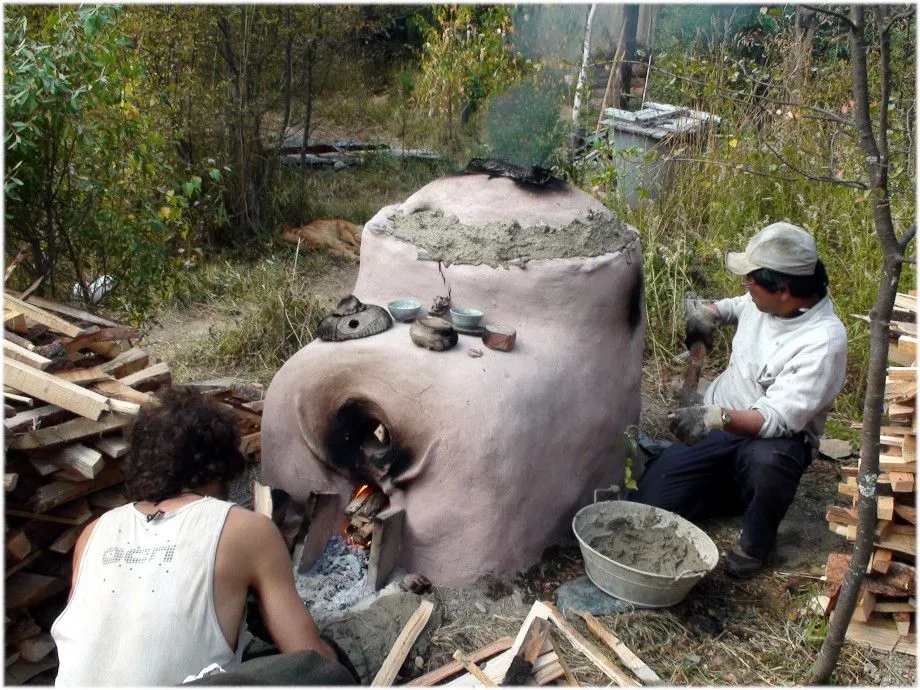
Las instrucciones
Tokio, el maestro alfarero, había acompañado el plano con un poco de información oral. Teníamos que armar bolas de arcilla y paja de 30 centímetros y después usarlas para armar el horno como si fueran ladrillos. Decidimos reemplazar la paja con pinocha.
The instructions
Tokio, the master potter, had accompanied the map with a little oral information. We had to assemble 30-centimeter balls of clay and straw and then use them to assemble the oven as if they were bricks. We decided to replace the straw with needles.
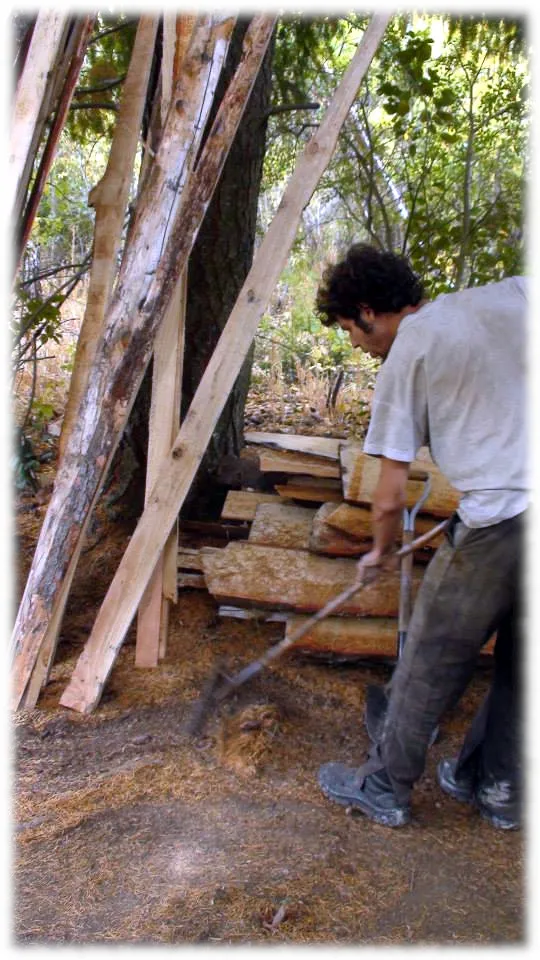
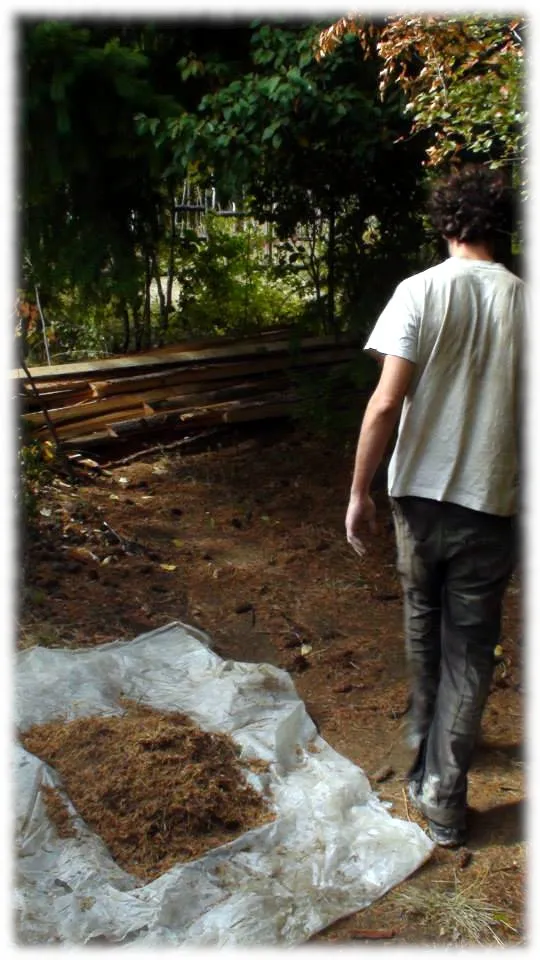
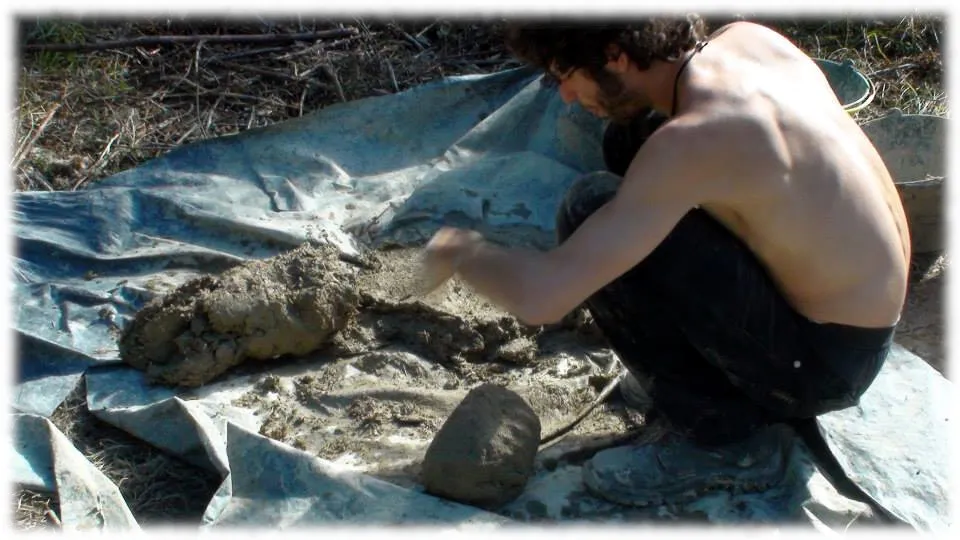
La aislación del piso
Debíamos evitar que el calor escapara hacia abajo, para así mejorar la temperatura dentro del horno. Tokio nos explicó que una forma simple de lograrlo era hacer un pozo de 80 centímetros un poco más grande que el tamaño del horno, y hacer 8 capas de 10 centímetros cada una de diferentes materiales. Así lo hicimos, y alternamos capas de arcilla y arena para dificultar el descenso de las ondas calóricas. Agregando un nailon, dijo, frenamos la entrada de aire por porosidad y aumentamos la eficiencia en el uso de leña.
Floor insulation
We had to prevent the heat from escaping downwards, in order to improve the temperature inside the oven. Tokio explained to us that a simple way to achieve this was to make an 80 cm well a little larger than the size of the oven, and make 8 layers of 10 cm each of different materials. We did so, alternating layers of clay and sand to make it difficult for the heat waves to descend. By adding a nylon, he said, we stopped the air in by porosity and increased efficiency in the use of firewood.
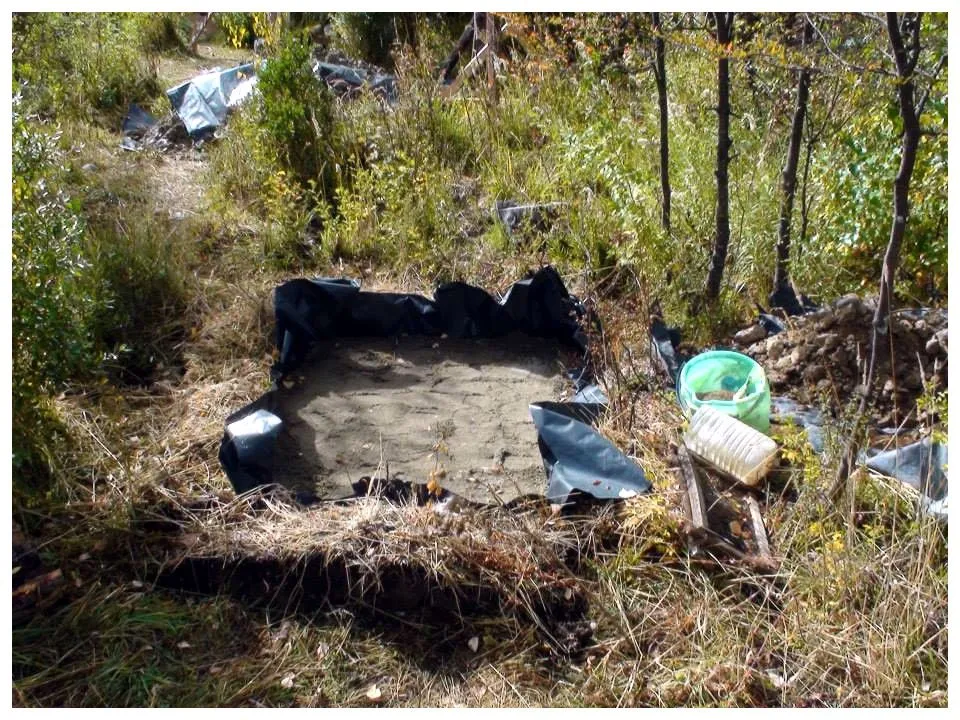
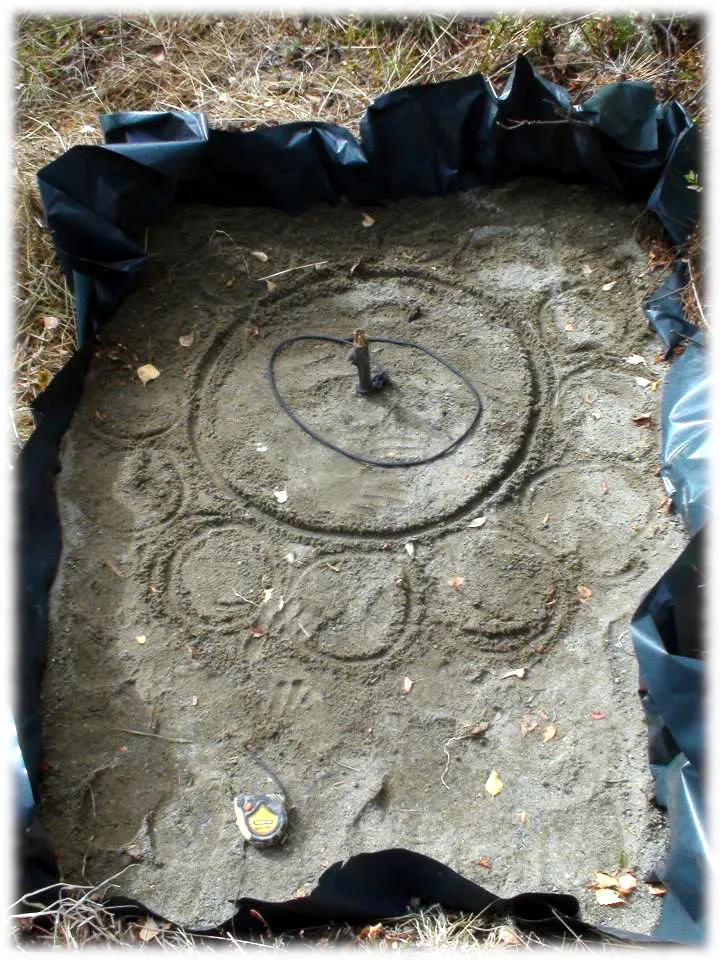
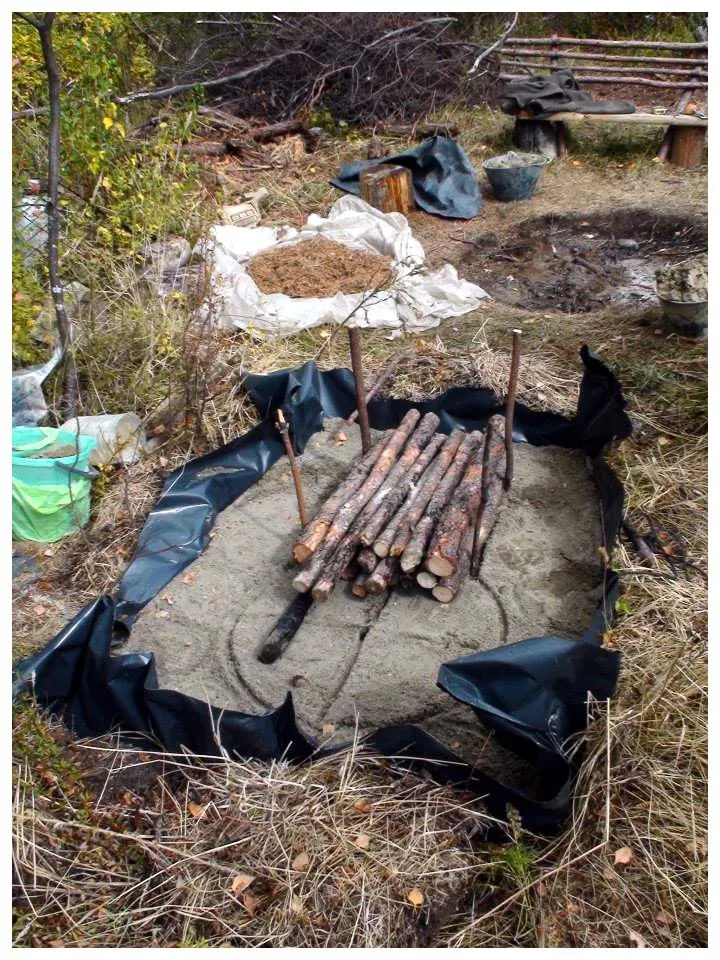
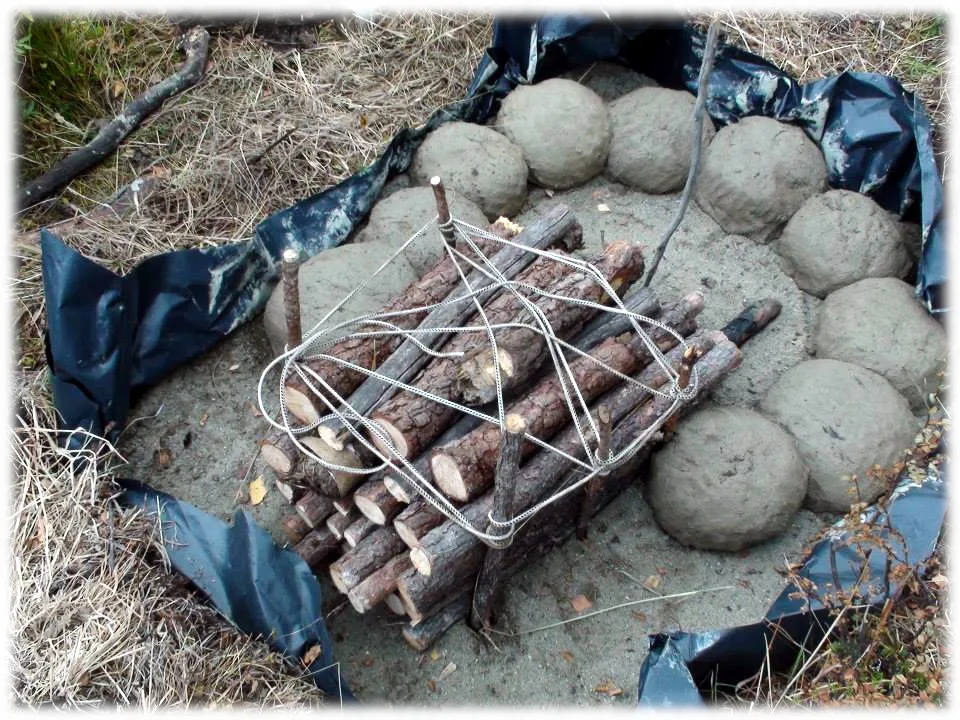
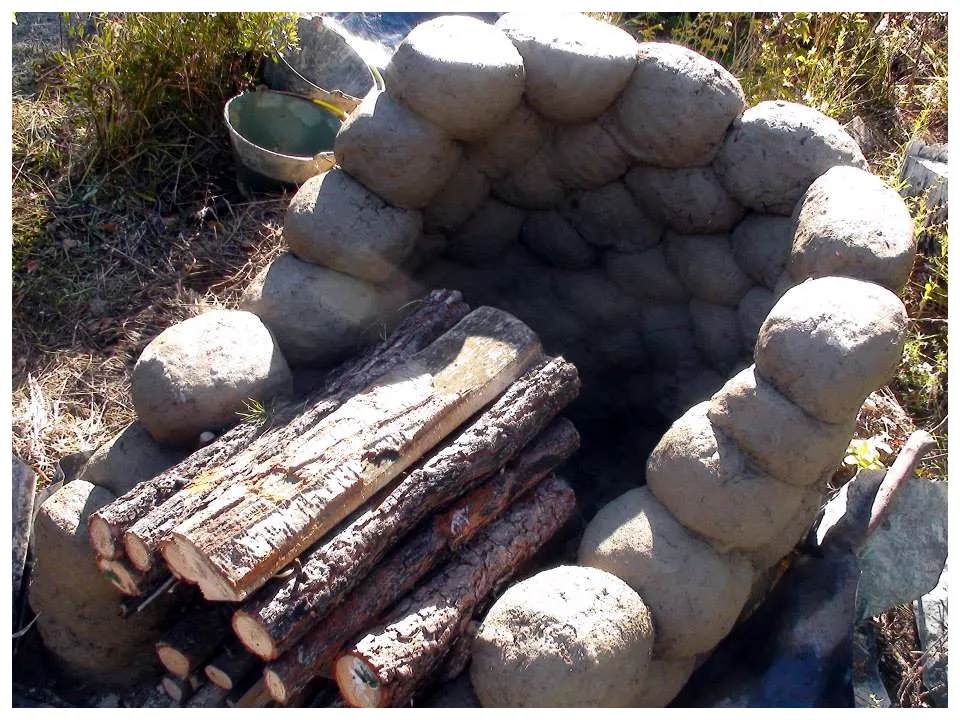
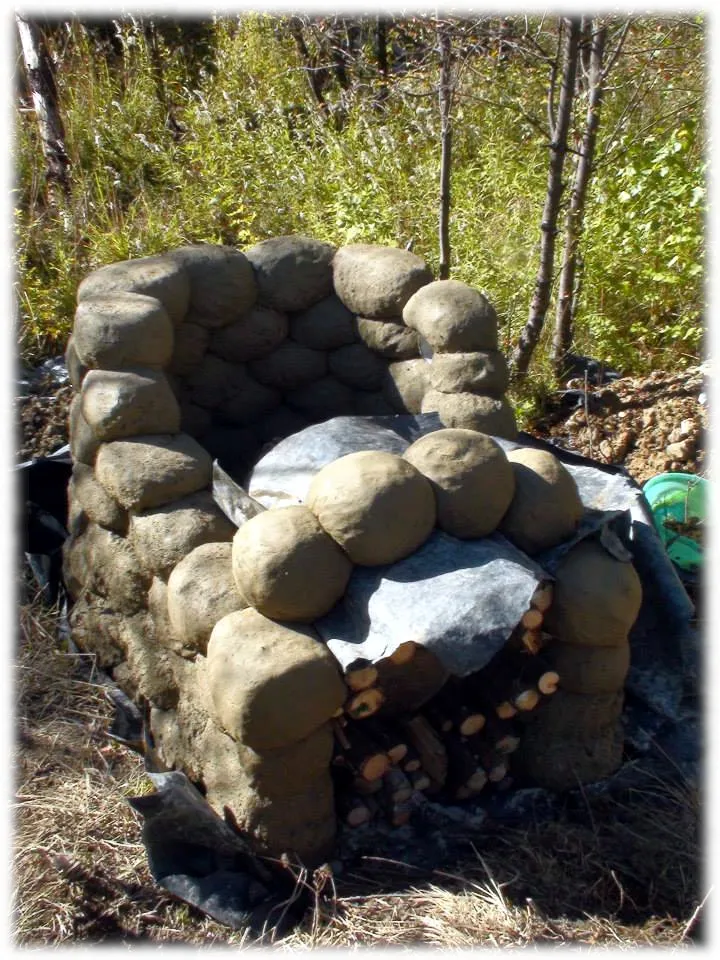

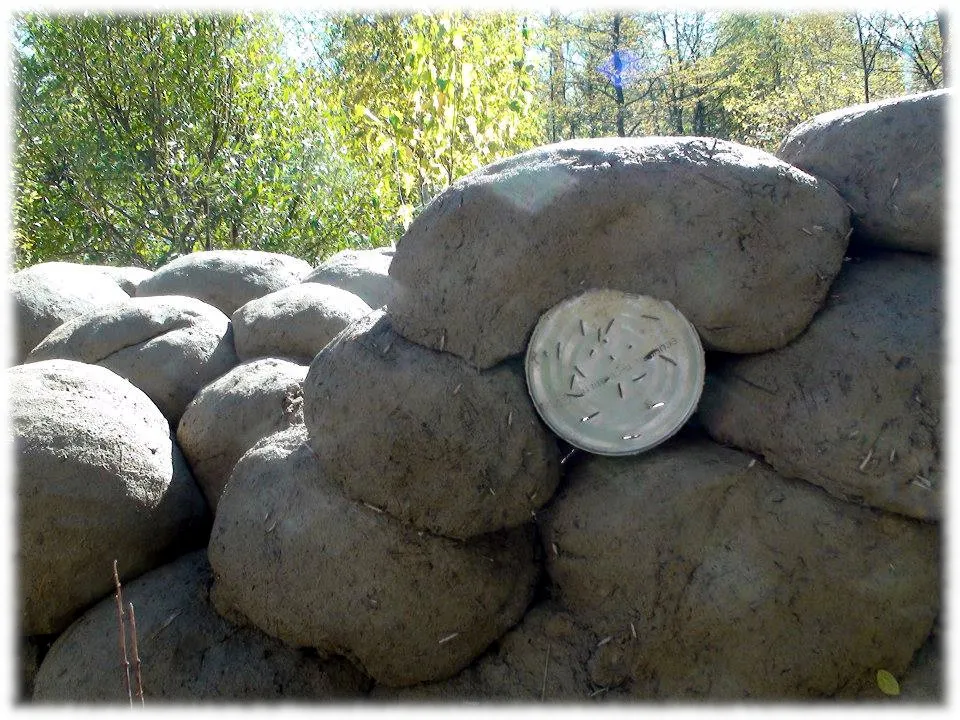
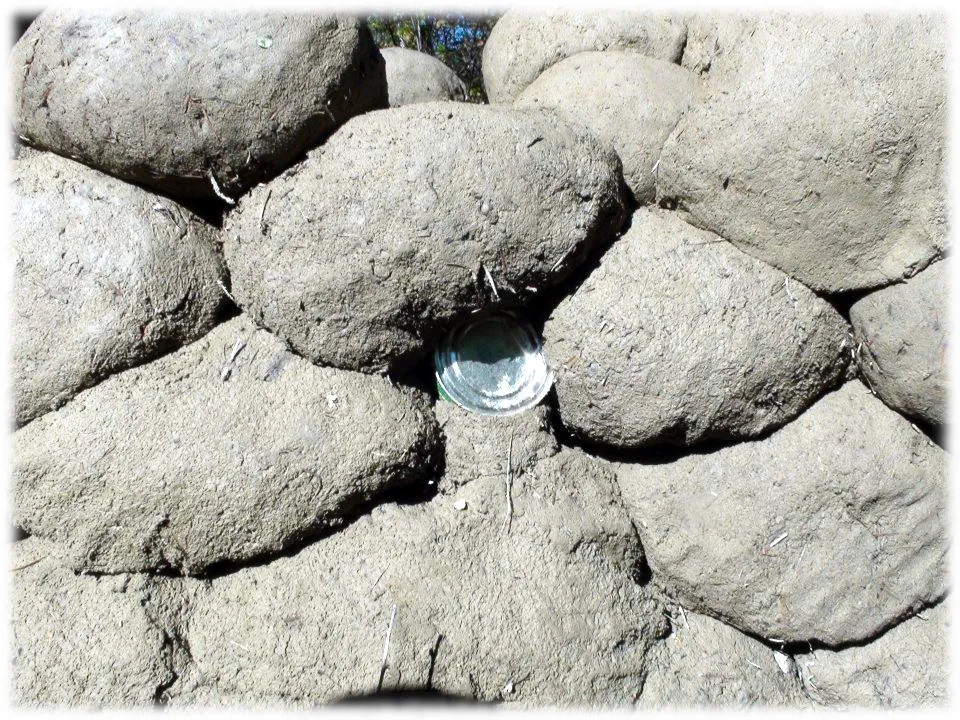
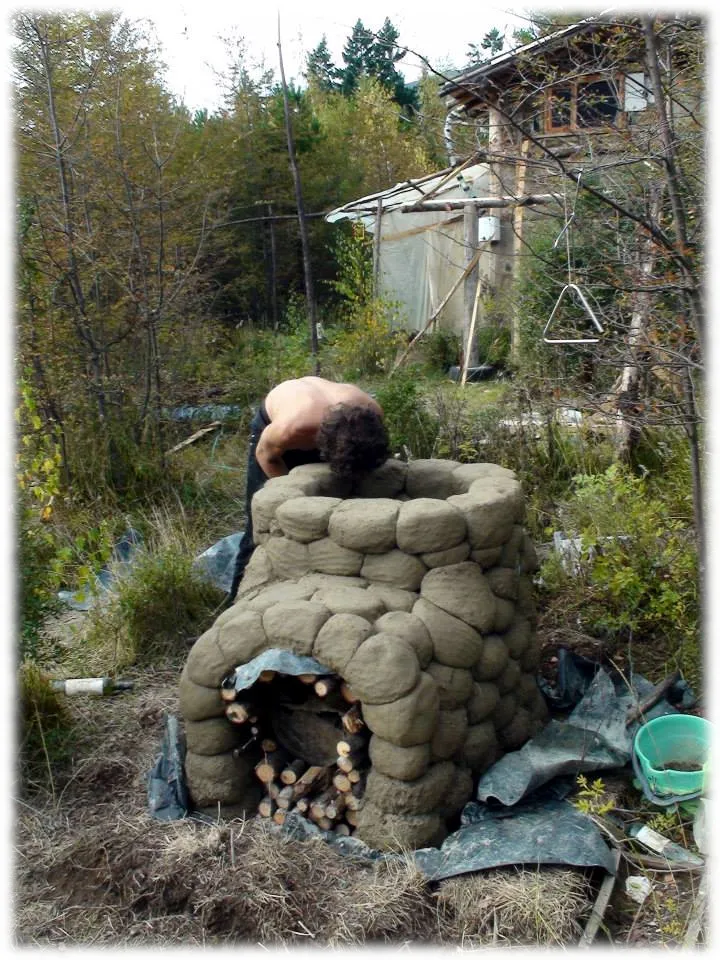
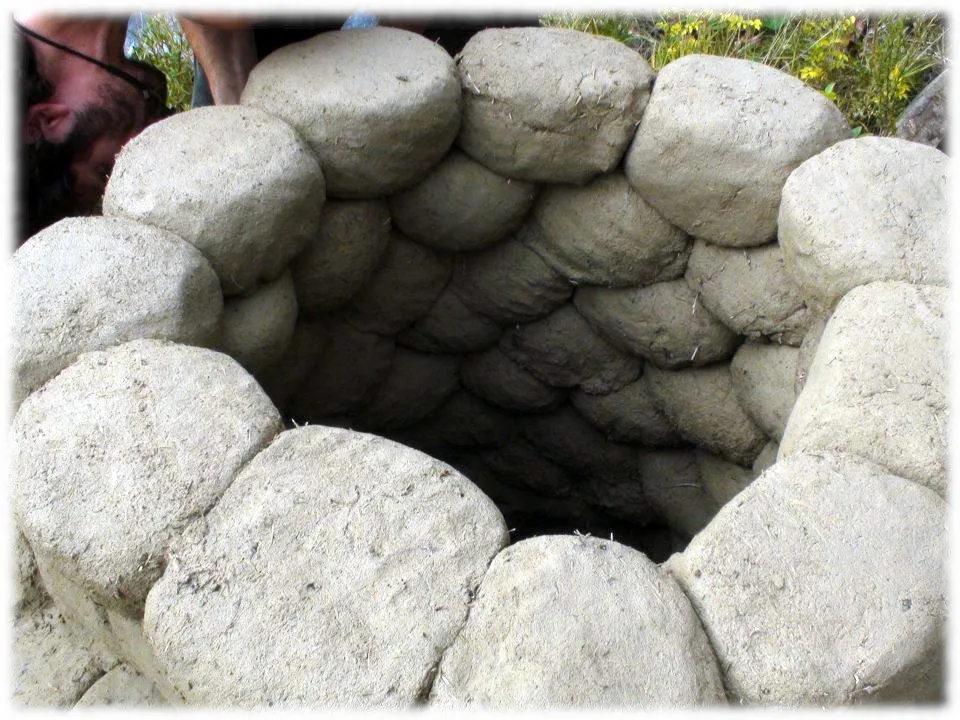
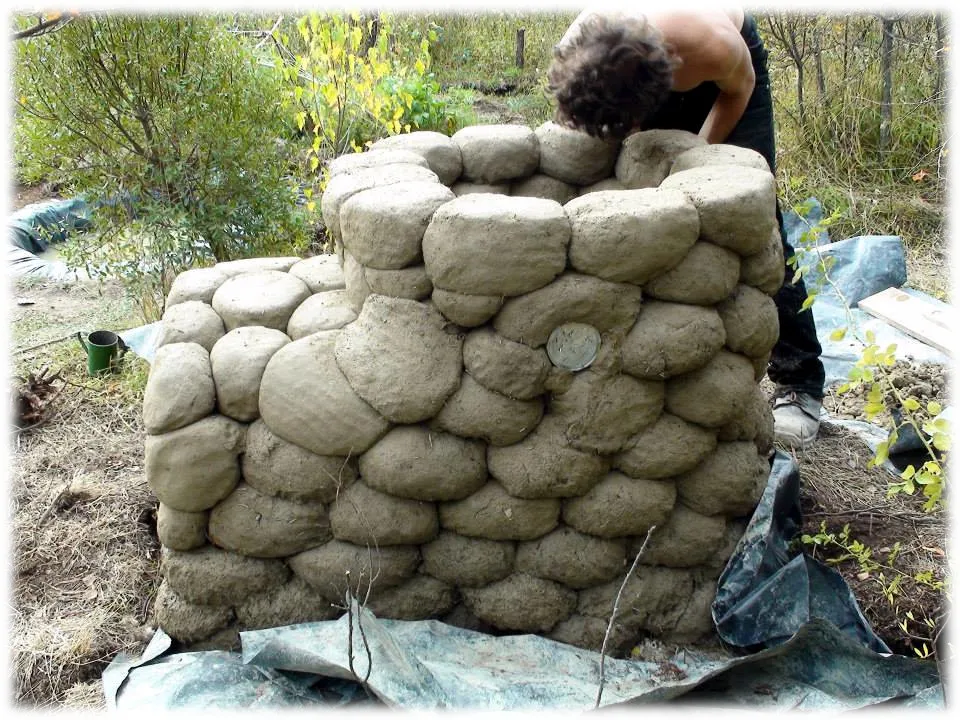
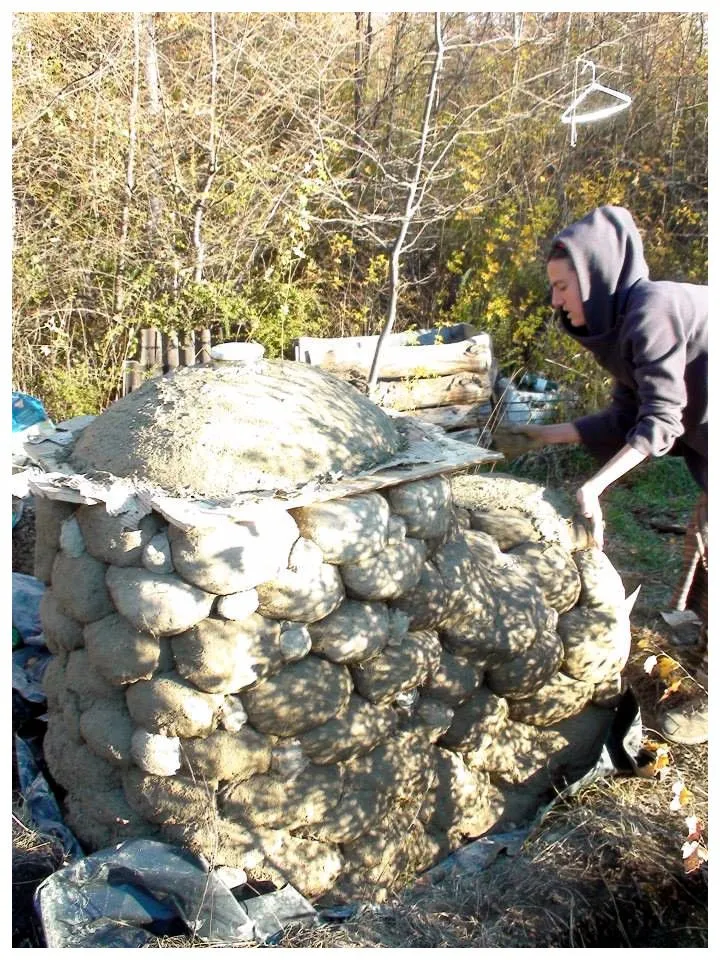
El invierno
El horno estaba listo, pero había llegado el invierno, y decidimos postergar la horneada hasta la primavera. Construimos un techo provisorio para el horno, que quedó espectante inmerso en el paisaje montañoso.
The winter
The oven was ready, but winter had come, and we decided to postpone baking until spring. We built a temporary roof for the furnace, which was wonderfully immersed in the mountainous landscape.
